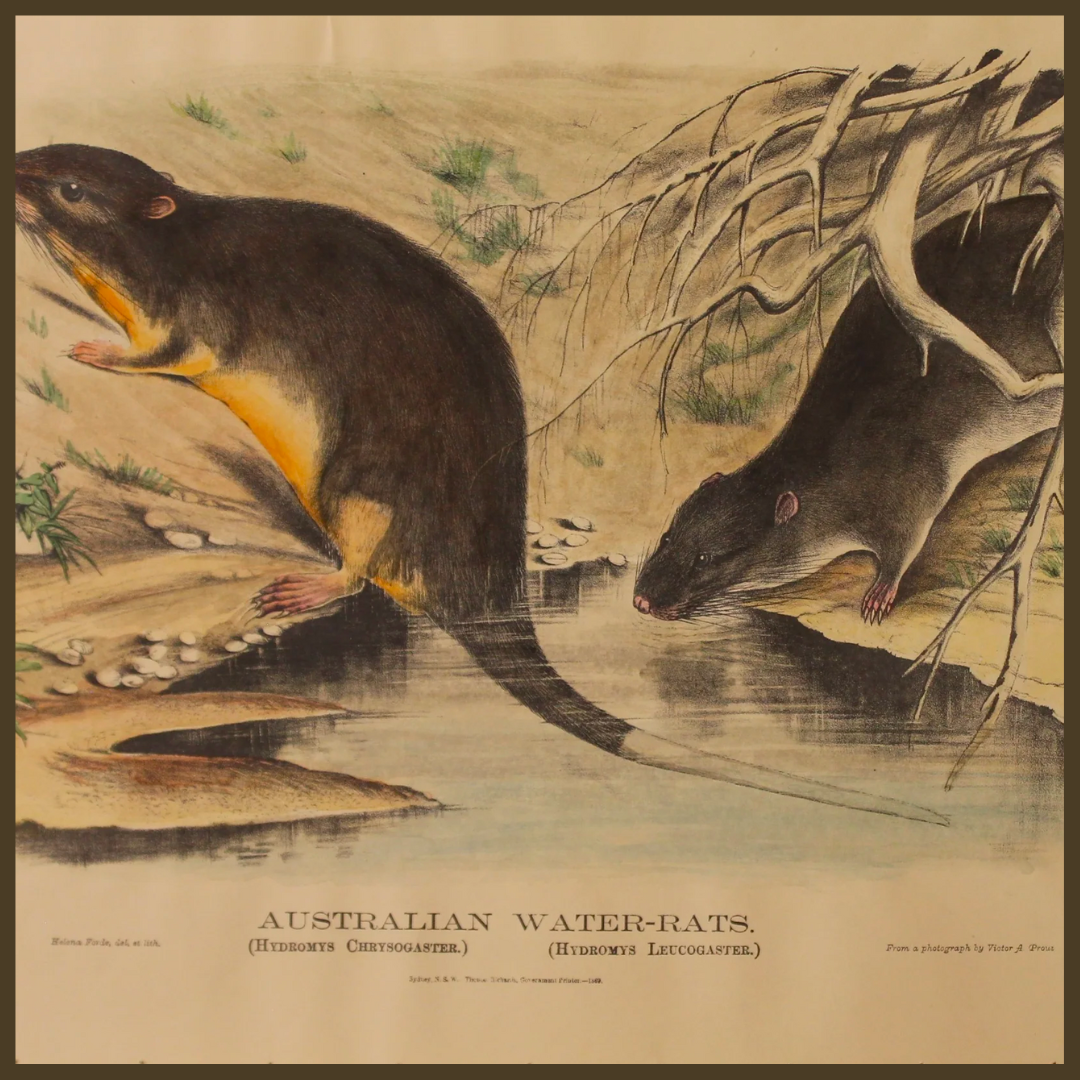
VANITY FAIR CARICATURISTS
Share
If you're looking for a who's who of Victorian life then grabbing an old copy of Vanity Fair is a good place to start. The most successful 'Society Magazine' in the history of English journalism, the publication ran under the promise of presenting “a weekly show of Political, Social and Literary Wares”. For almost fifty years it invited readers to recognise their vanities and each week it would summarise world events, review West End shows and – most importantly – caricature its readers! From artists and authors to scholars and statesmen; the Vanity Fair caricature was an integral part of upper-class Victorian life. Let’s take a look at some of the most revered:
Leslie Ward: SPY
The most prolific caricaturist at the magazine was undoubtedly Leslie ‘Spy’ Ward (1851–1922). From 1873 until 1911, Spy captured the people and personalities of Victorian society. During his time at the magazine, he produced more than half of its 2,387 caricatures and documented the best-known figures of the day. His work was immensely popular and he was largely responsible for reviving the tradition of the single figure caricature
These days, these types of drawings may feel like a bit of an oddity – they tend to lack the satirical edge we think of when we first think of caricatures. Yet despite this, Spy was undoubtedly one of the best of his era. His images may feel more complementary than insulting, but this is very telling of the time in which they were made.
Spy's era was that of the Victorian Empire. The Victorians played a huge role in shaping many aspects of Western culture and the social factors behind these developments are hugely relevant when looking at the context of anything that was created during this time. The era was one that was defined by huge class divides. It was a time of reputations and an era where respectability meant everything. Undoubtedly, these factors shaped the world of illustration too.
His early caricatures were closer to the types of satirical drawings we think of today. They have distorted proportions; large heads and exaggerated features. Yet the longer he stayed at the magazine, the more his reputation grew. Over the course of his career his style developed, moving further away from caricature and turning more into what he described as 'characteristic portraits'.
These conventional interpretations brought him great acclaim and his sustained productivity brought him great popularity. He might not have had the originality or artistic talents of some of his contemporaries, but his strong work ethic was worthy enough to justify his success. In 1918 he received a knighthood to highlight his 'good work to the citizens of the British Empire'
Carlo Pellegrini: APE
Carlo Pellegrini (1839 – 1889), who did much of his work under the pseudonym of Ape (Italian for "bee"), was an artist who served from 1869 to 1889 as a caricaturist for Vanity Fair magazine, a leading journal of London society. He was born in Capua, then in the Kingdom of the Two Sicilies. His father came from an ancient land-owning family, while his mother was allegedly descended from the Medici Family. His work for the magazine made his reputation and he became its most influential artist.
It is not recorded how Pellegrini met Thomas Bowles, the owner of Vanity Fair magazine, but he quickly found himself employed by that publication and became its first caricaturist, originally signing his work as 'Singe' (French for "Monkey") and later, and more famously, as 'Ape' (Italian for "Bee"). Pellegrini's work for the magazine made his reputation and he became its most influential artist, in which his caricatures were to be printed for over twenty years, from January 1869 to April 1889. His 1869 caricature of Benjamin Disraeli was the first colour lithograph to appear in the magazine, and proved immensely popular. It was the first of a highly successful series of more than two thousand caricatures published by Vanity Fair. Although the later caricatures by Sir Leslie Ward are perhaps now more well known, those by 'Ape' are regarded by many collectors as being artistically and technically superior.
Apart from drawing his caricatures for the magazine, Pellegrini also attempted to set himself up as a portrait painter, but this venture met with limited success. Pellegrini met Degas in London in the 1870s, and in about 1876–77 painted his portrait, inscribed 'à vous/Pellegrini' (to you/Pellegrini). In return, Degas painted Pellegrini's portrait, similarly inscribed.
Pellegrini was a member of the Beefsteak Club in London and there met Whistler, who became a great influence on his work; indeed, he even attempted to paint portraits in the style of Whistler. Pellegrini was also a member of The Arts Club from 1874 until 1888.
Pellegrini was extremely careful about his appearance, and would wear immaculate white spats with highly polished boots. He grew long Mandarin-like fingernails, would never walk when he could ride, and had a limitless fund of amusing stories and eccentricities. He spoke broken-English, flaunted his homosexuality (at a time when it was dangerous to do so), and would often bring macaroni dishes to elegant dinner parties. He would refuse invitations to country houses out of fear of strange beds, and had a habit of keeping a cigar in his mouth as he slept.
He died of lung disease at his home, 53 Mortimer Street in London. He is buried in St Mary’s Roman Catholic Cemetery, Kensal Green, London.
- Théobald Chartran
Théobald Chartran (1849 – 1907) was a classical French propaganda painter.
As "T", he was one of the artists responsible for occasional caricatures of Vanity Fair magazine, specialising in French and Italian subjects. His work for Vanity Fair included Pope Leo XIII, Giuseppe Garibaldi, Umberto I of Italy, William Henry Waddington, all in 1878, Charles Gounod, Giuseppe Verdi, Ernest Renan, Jules Grévy, Napoléon Joseph Charles Paul Bonaparte, Victor Hugo, Marshal MacMahon, Granier de Cassagnac, Louis Blanc, and Alexandre Dumas fils, all in 1879.
President Theodore Roosevelt’s official portrait was originally commissioned to Théobald Chartran in 1902, but when Roosevelt saw the final product he hated it and hid it in the darkest corner of the White House. When family members called it the "Mewing Cat" for making him look so harmless, he had it destroyed and hired John Singer Sargent to paint a more masculine portrait.
FTD - Frederick Thomas Dalton
Frederick Thomas Dalton was educated at Highgate School and Corpus Christi College, Oxford He was Assistant Master of Radley College in 1879–1880. He qualified for admission as a solicitor and in 1893 he joined the staff of The Times, became Assistant Editor of Literature in 1897 and served as Editor of Literature in 1900–1901. He was assistant editor for The Times Literary Supplement from 1902 to 1923.
Excerpts taken from Wikipedia
Related Tag: Portrait Prints




